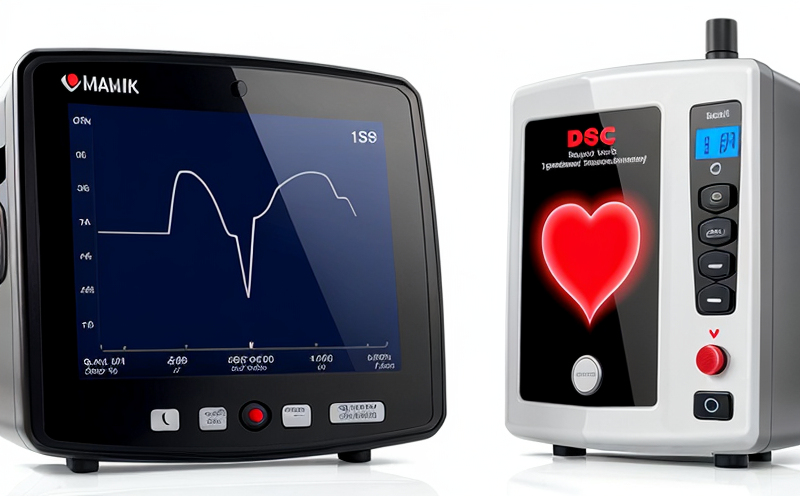ASTM F2516 Fatigue-to-Fracture Testing of Nitinol Cardiovascular Devices
The ASTM F2516 standard is a critical guideline for fatigue-to-fracture testing of nitinol cardiovascular devices. This test method ensures that the materials used in these devices can withstand repetitive loading without failure, which is essential for their safe and reliable performance during medical procedures.
Nitinol (nickel titanium) is widely used in the design of cardiovascular devices due to its unique superelastic and shape-memory properties. The fatigue-to-fracture testing as per ASTM F2516 helps evaluate how these materials behave under cyclic loading conditions, simulating real-world usage scenarios such as repeated bending or flexing during deployment.
The standard specifies detailed procedures for conducting the test, including specimen preparation, equipment setup, and data collection. Specimens are typically cut from nitinol wires or tubes to ensure they have similar mechanical properties throughout their length. The testing apparatus applies a controlled cyclic load to these specimens until fracture occurs.
One of the key aspects of ASTM F2516 is its focus on controlling variables that could affect test results, such as environmental factors like temperature and humidity, which can influence material behavior during fatigue cycles. By adhering strictly to these conditions, laboratories ensure consistent and reproducible outcomes across different samples.
The test procedure involves monitoring strain at specific points along the specimen length using extensometers attached directly onto the device or its components. Strain measurements provide crucial information about how much deformation occurs before failure happens. This data is then used alongside other parameters like load and cycle count to determine whether a given nitinol sample meets the required performance criteria.
ASTM F2516 also considers post-mortem inspection of fractured specimens, where detailed examinations are conducted to understand why particular failures occurred. Insights gained from these analyses contribute valuable knowledge towards improving future designs and manufacturing processes.
In summary, ASTM F2516 plays a vital role in ensuring that nitinol cardiovascular devices meet stringent quality standards before they reach clinical use. By providing clear guidelines on testing methodologies, this standard helps maintain high levels of safety and efficacy across the industry.
Quality and Reliability Assurance
Ensuring top-notch quality and reliability is paramount in cardiovascular device manufacturing. ASTM F2516 fatigue-to-fracture testing serves as an essential tool for maintaining these standards by providing objective measures of material performance under cyclic loading conditions.
Quality managers rely heavily on results from this test to verify that components adhere strictly to design specifications. Compliance officers use it during audits to confirm adherence to relevant regulatory requirements like those outlined in ISO 13485 or FDA regulations for Class II medical devices.
R&D engineers benefit significantly from ASTM F2516 as well since they can utilize the data gathered during testing cycles to refine designs and identify potential weaknesses early on. Procurement teams also find value in this type of testing because it allows them to source materials that consistently meet stringent performance criteria without compromising cost-effectiveness.
Through rigorous application of ASTM F2516, manufacturers can demonstrate commitment to producing safe and effective cardiovascular devices, thereby building trust with healthcare providers who ultimately decide which products to recommend or purchase for patient care.
International Acceptance and Recognition
The International Organization for Standardization (ISO) recognizes ASTM F2516 as a harmonized standard, meaning it aligns closely with international norms. This recognition ensures that results from fatigue-to-fracture tests conducted according to ASTM F2516 are widely accepted across borders.
European Union directives like Directive 93/42/EEC on medical devices also reference ASTM F2516, further emphasizing its importance in ensuring compliance with EU regulations. Similarly, the US Food and Drug Administration (FDA) accepts results derived from this test method when evaluating submissions for approval of cardiovascular devices.
Recognizing ASTM F2516 fosters global consistency among manufacturers who must meet varying regional standards while still producing consistent products that perform reliably under all expected conditions worldwide. This harmonization reduces barriers to market entry and facilitates smoother international trade in the medical device industry.
Use Cases and Application Examples
| Use Case | Description |
|---|---|
| Catheter Design Validation | Testing catheters made from nitinol ensures they can withstand the repetitive bending required during insertion into narrow blood vessels. |
| Balloon Dilatation Testing | Evaluates balloons used in angioplasty procedures to confirm they remain intact through multiple expansion cycles without rupturing. |
| Valve Deployment Simulation | Simulates the deployment of heart valves into patient anatomy to assess whether nitinol components will hold their shape and function effectively over time. |
| Stent Expansion Assessment | Determines how stents expand within arteries under various physiological pressures, ensuring they maintain patency without causing damage. |
| Guide Wire Durability Testing | Evaluates guide wires used to steer other devices into precise locations inside the body, verifying their ability to withstand continuous flexing during use. |
| Wire Mesh Strength Evaluation | Assesses wire meshes used in various cardiovascular applications, confirming they can support tissue growth and remodeling without breaking down prematurely. |
| Tubular Device Flexibility Assessment | Evaluates flexible tubular devices like catheters or sheaths to ensure they remain pliable while still providing necessary rigidity for proper function. |
These use cases highlight the versatility of ASTM F2516 fatigue-to-fracture testing in addressing diverse challenges faced by cardiovascular device manufacturers. By applying this standard across all relevant stages of product development, companies can ensure their products meet or exceed regulatory requirements while delivering superior clinical outcomes.





